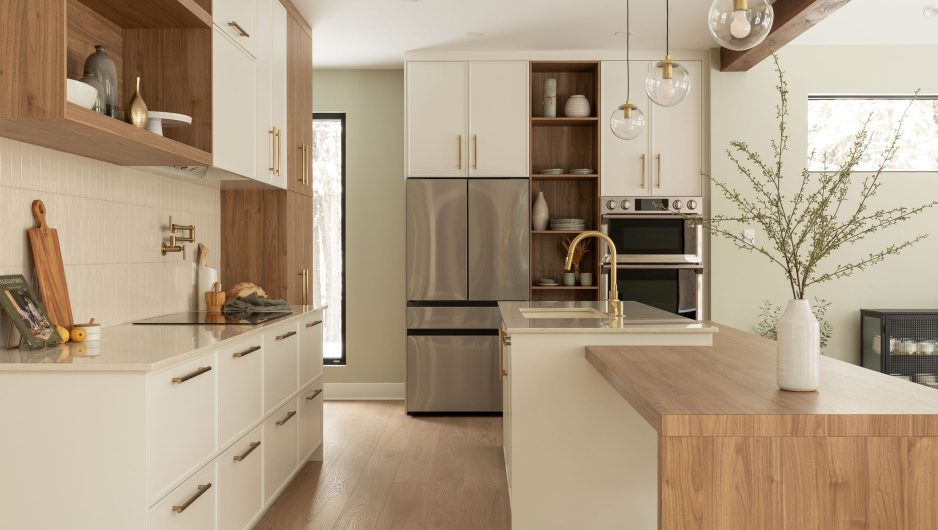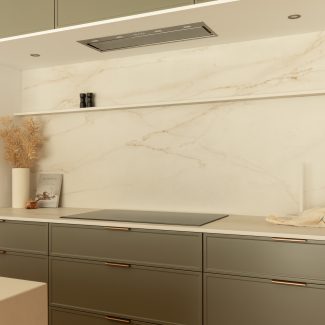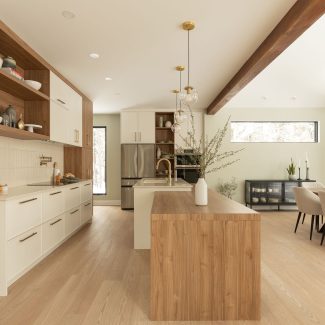It’s often said that the kitchen is the beating heart of the home. From morning to night, the room comes alive, whether it’s for a quick snack or a big family dinner. So as you get ready to renovate, it’s essential to choose the appliances that best suit your lifestyle and needs. When you’re planning a customized kitchen, the first step is to choose the right appliances. Take a few moments to analyze your needs in depth with our handy tips.
Step 1: Determine the features that suit you
- First and foremost, start the process by identifying how you will use your kitchen. The following questions can help you pinpoint your needs:
- How many people live in your household?
- How often do you cook?
- What types of dishes do you often cook?
- Do you have specific cooking or refrigeration requirements?
- Do you have young children or pets?
For example, a large family will need a spacious refrigerator, while someone who doesn’t cook much may be happy with a European format. Understanding your needs will help you choose appliances that will make your daily life easier. Once you’ve done this, you’ll be able to better identify the key features of each type of appliance.
Refrigerator
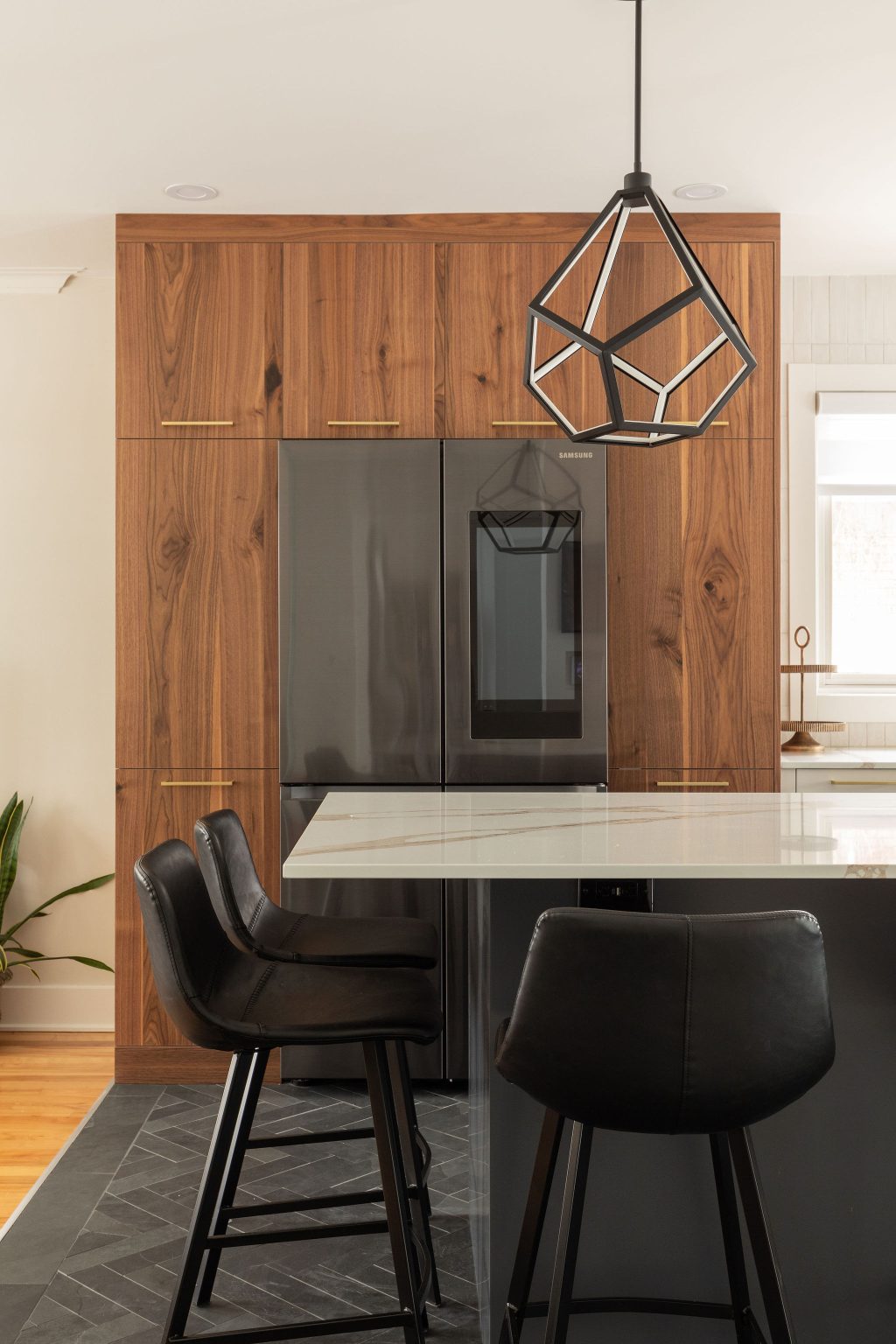
Door type: Do you prefer to have your freezer and refrigerator side by side, or stacked on top of each other? From French doors to drawers, the options are endless!
Capacity: How big is your usual grocery cart? Do you need lots of storage space?
Depth: There are now refrigerators with countertop depths that offer a flush fit with kitchen counters and cabinets.
Features: Would you like a water and ice dispenser? A smart screen? Increased energy savings? These are all little extras for you to consider.
Range

Heat source: A gas-fired range offers precise heat control more suited to experienced cooks, while an electric range heats up quickly and is easy to clean. An induction range is also an available option, using electromagnetic technology for fast, precise cooking.
Oven options: Several range models now offer the option of a double oven, enabling two meals to be cooked at once. Convection technology also ensures even cooking by circulating hot air. Note that this type of appliance produces a slight sizzling sound that may annoy some people.
Burner configuration: How many burners do you want to have available when cooking?
Hood
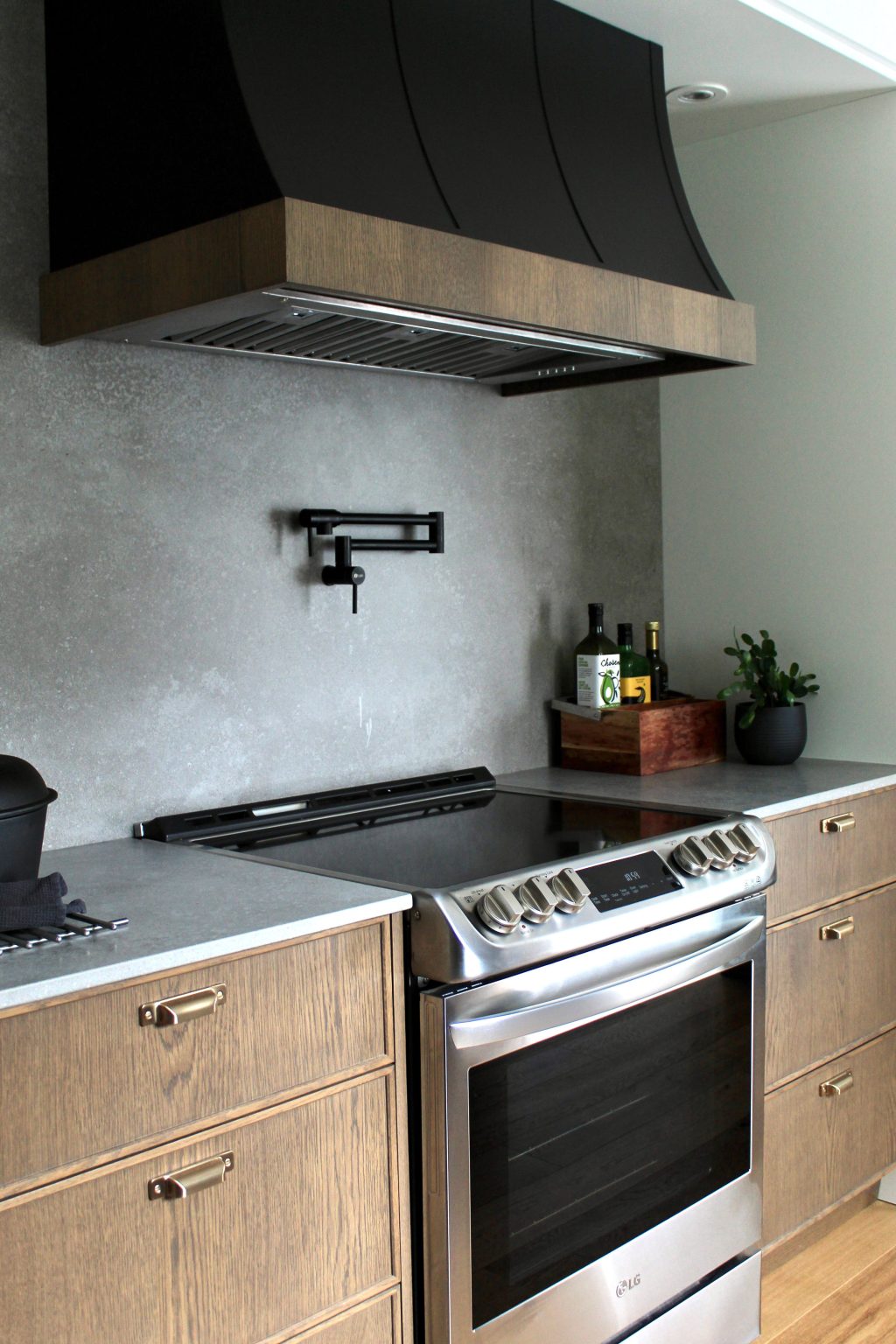
Wall-mounted or suspended? It all depends on where you plan to place your range, whether on the wall or in the center of an island.
Power: Make sure you choose a venting hood with a sufficiently high extraction capacity for the volume of the room and the power of your range.
Appearance: Is your range hood going to be an eye-catching design feature, or more of an appliance to be hidden away?
Noise level: If your dining room is adjacent to your kitchen, a quieter option would be a good choice.
Microwave hood: If space is an issue, opting for a microwave hood will free up your counters.
Dishwashers
Cycle types: Make sure the dishwasher offers cycles adapted to different types of dishes and grime.
Capacity and rack types: Is the rack height configurable? Do you prefer 2 or 3 pull-out baskets?
Dashboard layout: If you often cook over your dishwasher, a concealed dashboard at the top of the appliance can prevent you from getting caught on the knobs when leaning against the appliance.
Food grinders and filters: If rinsing your dishes is a task you’d like to forget, choose a model that takes care of filtering or crushing any remaining food particles.
Energy efficiency, a factor to consider
Opt for Energy Star-certified appliances, which are designed to reduce energy consumption and, consequently, energy costs. In addition to saving you money in the long run, these appliances are more environmentally friendly.
Others
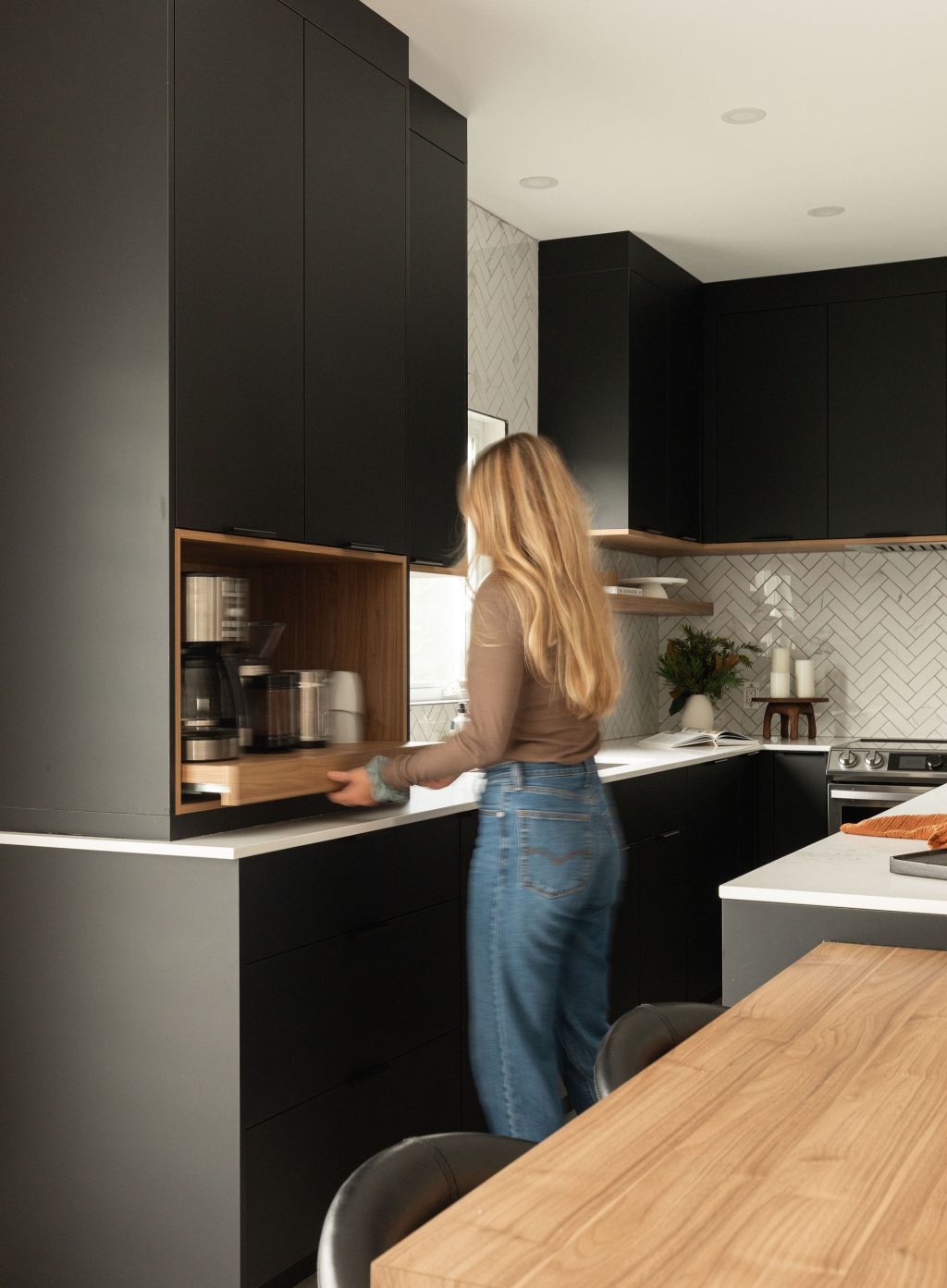
Countertop appliances: Are you cooking most often with your small countertop appliances like an air fryer, food processor or slow cooker? Plan a dedicated space for these countertop appliances.
Breakfast nook: Coffeemaker, teapot, toaster… Items that people use on a daily basis. Planning a breakfast nook can completely change your morning routine.
Wine cellar: Wine lovers? Whether it’s for long-term storage or to keep your favorite bottles at the ideal serving temperature, the wine cellar is an important element to consider when planning a kitchen.
Step 2: choose the style and design you like
Make sure that the appliances you choose fit in harmoniously with the style you’re aiming for in your kitchen, be it modern, traditional, contemporary or other. Appliance finishes, colors and materials should harmonize with the rest of the kitchen.
Finishes: Several finishes are now available, including white, black, stainless steel and others. Some wash better than others, which is important with young children or pets.
Built-in options: some models can be integrated with kitchen door design for a uniform, uncluttered look.
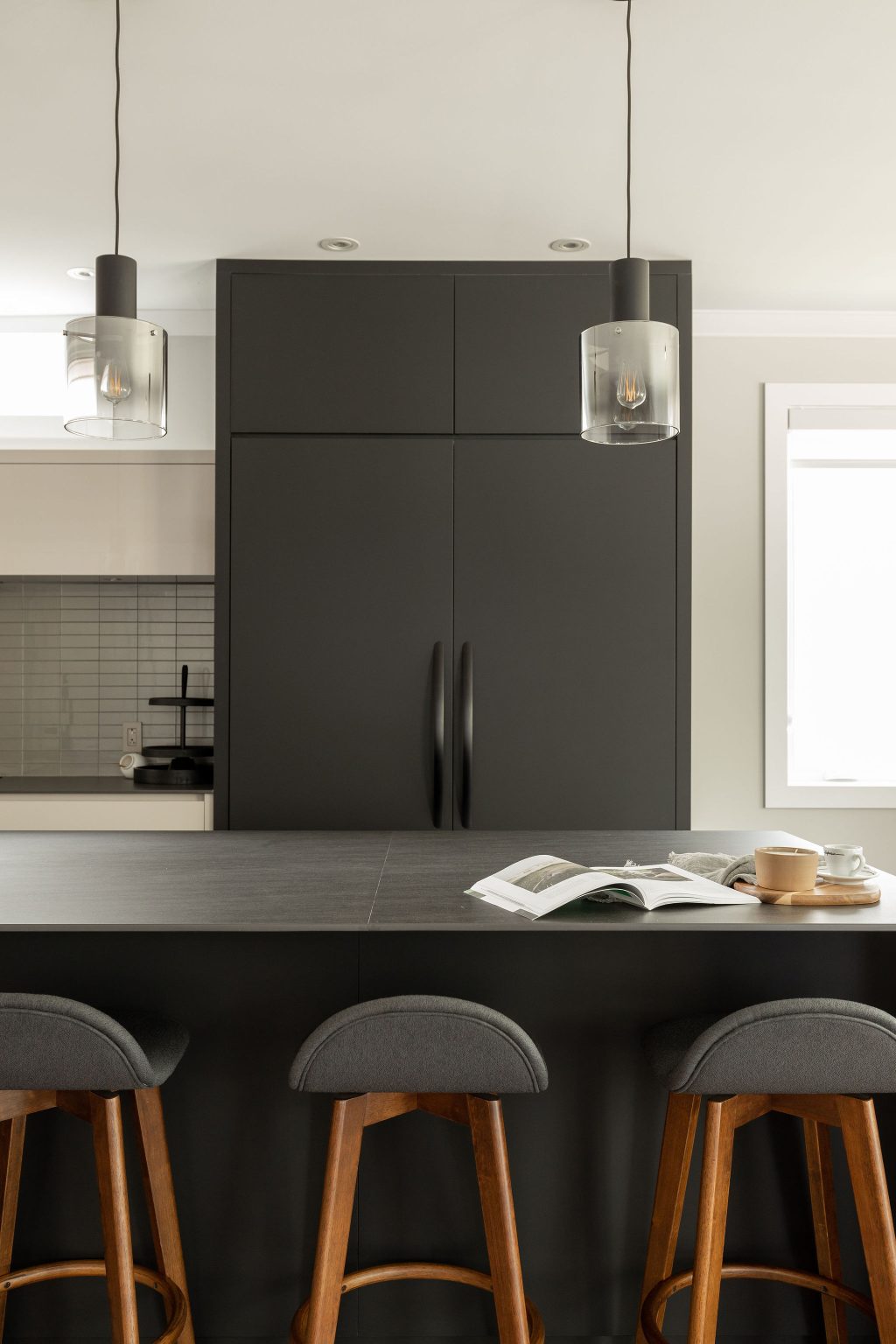
Step 3: Take note of appliance dimensions
The space available in your kitchen is a determining factor in the choice of appliances. Specify the dimensions of each appliance, including height, width and depth, to your kitchen designer. By choosing your appliances first, you can ensure that they fit perfectly into your kitchen design without compromising circulation or kitchen aesthetics. This will ensure a precise fit and avoid problems of unused space or doors being obstructed by other elements.
Step 4: plan appliance placement
The choice of appliances helps determine their best location for kitchen designs. For example, the location of the stove, oven and dishwasher must be determined in relation to the kitchen design and the layout of electrical outlets and water pipes. If you choose your appliances in advance, your kitchen designer can help you plan their placement to optimize your kitchen’s efficiency.
Step 5: Set a budget
Set a realistic budget for the purchase of your appliances. Prices can vary considerably according to brand, size, quality and functionality. Some suppliers offer considerable discounts when you choose appliances of the same brand. Identify priorities based on your needs and allocate the budget accordingly, taking care not to compromise quality to save money.
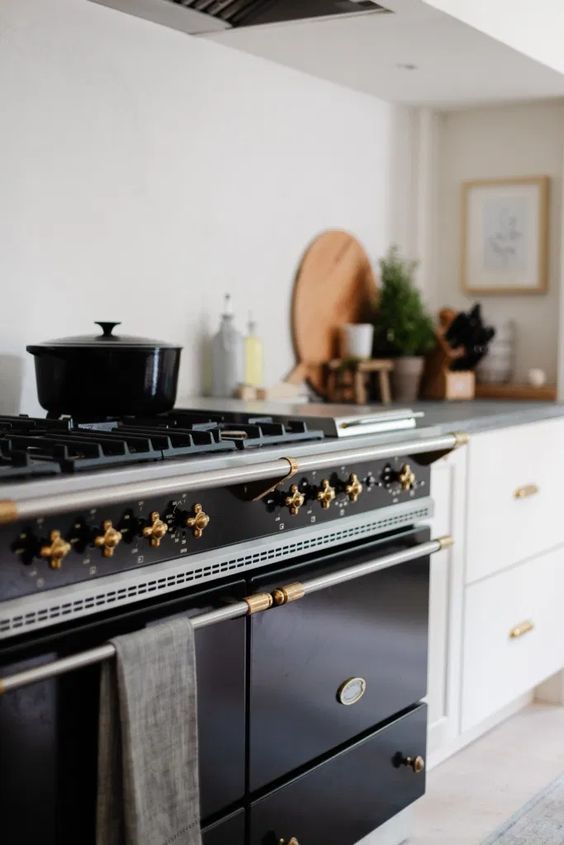
Source: Pinterest
All in all, choosing kitchen appliances requires careful planning and a thorough understanding of your needs, your space and your lifestyle. Take the time to research, compare and evaluate different options before making a final choice. Opt for appliances that are energy-efficient, suited to your space, in harmony with your kitchen’s design, and easy to use and maintain. By following your kitchen designer’s advice, you’ll be able to enjoy a functional and aesthetically pleasing kitchen, perfectly equipped to meet your needs.
